Since 2008 the Hands Up Scotland Survey has been providing annual insights into how pupils travel to school. With this year's results hot off the press, Head of Programmes Dr Lee Muir explores the latest findings and what they mean for young people in Scotland.
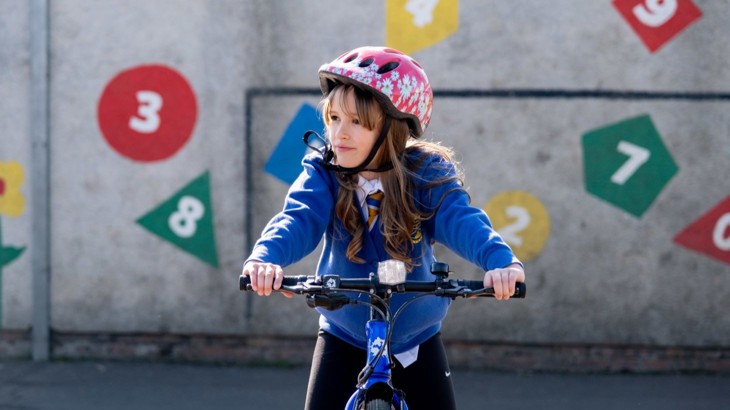
The Hands Up Scotland Survey examines how pupils across Scotland travel to school. Credit: Michael Kelly/Sustrans.
The Hands Up Scotland Survey is the largest national dataset on school travel.
Over one week in September, school pupils across Scotland are asked one question: “How do you normally travel to school?”
The number of pupils present is recorded, and pupils are asked to raise their hand for one of the travel mode options - by foot, cycle, scooter or skating, park and stride, car, bus, taxi or other.
As ever, this year’s findings provide a fascinating snapshot.
The results show that almost 2 in 3 pupils travelled sustainably to school in 2024 – either by active travel or by bus.
Let’s delve into the data.
Active travel remains the most popular way to travel to school – but levels have fallen
Active travel remains, by far, the most common way for pupils to get to school in Scotland.
However, it has fallen to the lowest levels recorded since the survey began in 2008.
46.6% of school pupils travelled actively to school in 2024, either by walking, cycling, scootering or skating.
Walking is still by far the most popular way of getting to school overall, representing 39.8% of journeys – despite a decrease of 1.5 percentage points since 2023.
Cycling levels have also dropped by 0.8 percentage points since 2023, representing 3.9% of journeys in 2024.
Meanwhile scootering and skating have maintained similar levels, representing 2.9% of school journeys – down slightly from a record high of 3.3% in 2023.
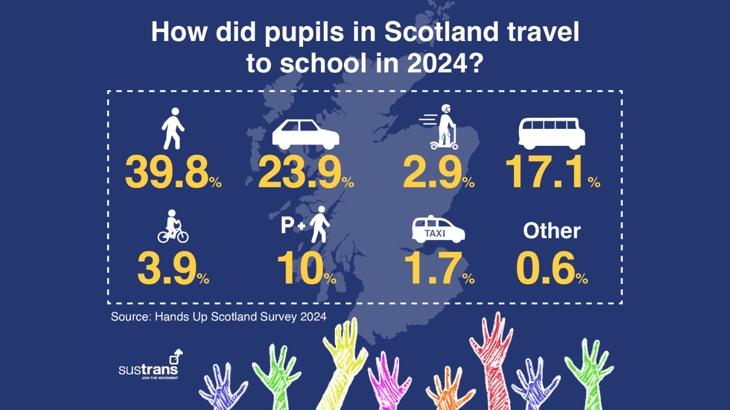
Results show almost 2 in 3 pupils (63.7%) travelled sustainably to school in 2024 - either by active travel or by bus.
More pupils are getting to school by bus – but car travel is also on the up
The survey found that the proportion of pupils taking the bus to school has increased for the fourth year in a row.
At 17.1%, this is higher than pre-pandemic levels and the highest level recorded by the survey since 2015.
Combined with active travel, this means almost 2 in 3 pupils (63.7%) travelled sustainably to school in 2024.
Meanwhile figures from the survey also show that the proportion of pupils being driven to school has risen by 1.4 percentage points since 2023.
23.9% of pupils said they are normally driven to school, making this the second most common mode of travel.
What do the results mean for young people in Scotland?
The Hands Up Scotland Survey findings provide a valuable insight into the travel habits of our young people.
The upward trend in bus travel may suggest the under 22s free bus travel scheme, introduced in 2022, is continuing to impact positively on school journeys.
Given this rise, it is crucial to ensure school pupils can safely and easily reach their local bus stop by bike, foot, wheelchair or other mobility aid.
While it is positive to see active choices remaining the most popular way of getting to school, the fall in levels recorded this year does present cause for concern.
Whilst we can’t draw conclusions from the data around why people are choosing to make the school run in a particular way, it may be that some pupils are using the bus or being driven when they’d previously travelled actively.
We do know from our Walking and Cycling Index reports that safety is the number one barrier people across Scotland face to active travel, and in particular stops many from choosing to get around by bike.
On top of this, our recent Children’s Walking and Cycling Index for Scotland showed the vast majority of our young people want to see more active travel routes away from traffic.
The evidence shows that young people across Scotland want to make healthier and more sustainable choices for how they get around.
And when our young people feel safe and confident enough to do this, it not only improves their health and mental wellbeing; it builds independence.
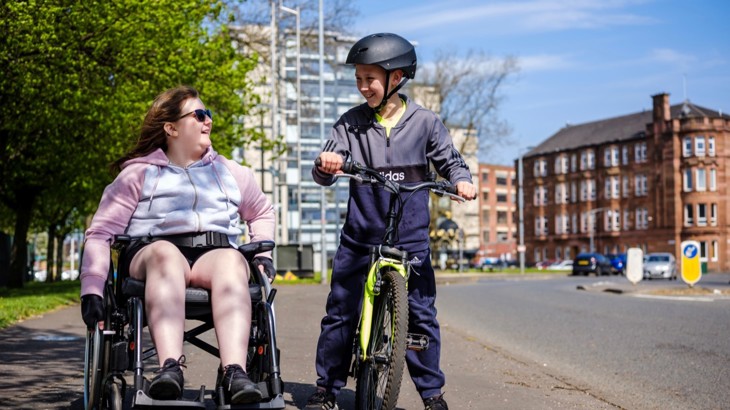
Walking, wheeling and cycling benefit young people's health, wellbeing and independence. Credit: Brian Sweeney/Sustrans.
What can we do now to give Scotland’s young people happier, healthier and safer choices?
If we want to make active school runs safe, accessible and viable choices for more families, it’s clear this needs to be backed by sustained investment.
A key part of this is funding safer routes and infrastructure which support these journeys.
But, alongside safer physical connections, targeted work within schools is critical in supporting pupils to build the skills and confidence to walk, wheel and cycle.
And we know that programmes like I Bike, Bikeability, the Big Walk and Wheel, and WOW Travel Tracker make a real difference.
Research shows that young people attending schools involved with even one of these programmes walk, scoot and cycle more than national averages.
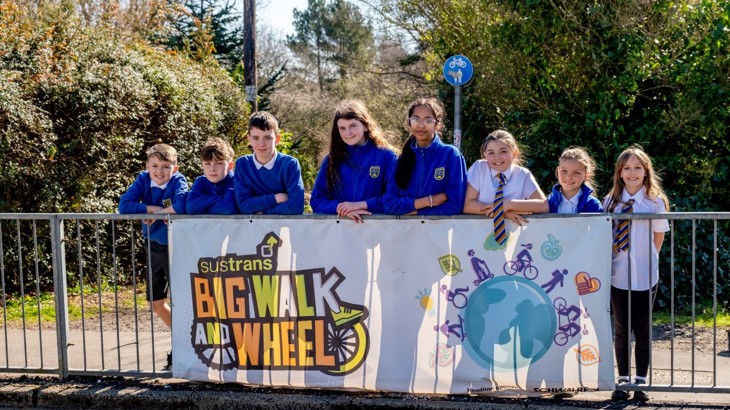
Sustrans' Big Walk and Wheel inspires pupils to make active journeys to school, improve air quality in their neighbourhood and discover how these changes benefit their world. Credit: Michael Kelly/Sustrans.
The recent picture across Scotland’s public finances has been extremely challenging.
And, unfortunately, investment which supports young people to get around actively has not been immune from this pressure.
The Hands Up Scotland Survey can’t give us the exact answers around what’s helping or stopping more young people from walking, wheeling or cycling to school.
But the 2024 results may prompt reflection on the implications of difficult decisions taken at government level, which have limited or reduced support for some of the work mentioned above.
Establishing positive habits is a long-term process, and we will also use this as an opportunity for continuous improvement within Sustrans’ work.
It’s crucial that behaviour change programmes continually evolve and improve to support young people in taking the actions they want to take.
So, alongside working to secure ongoing investment, we will reflect and ensure this work continues to adapt to best meet the needs and aspirations of Scotland's pupils and their families.
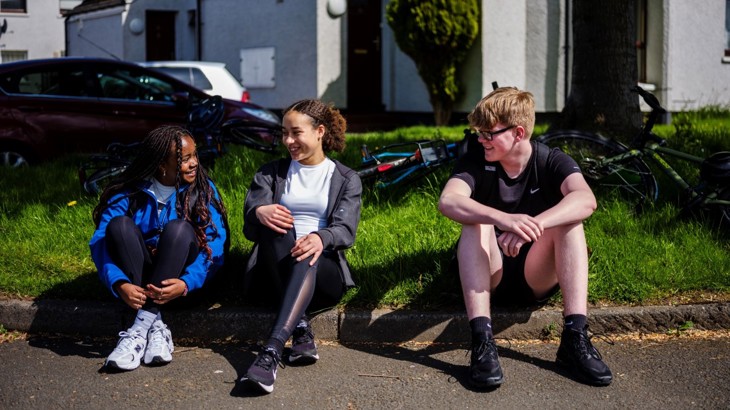
Combined, infrastructure investment and support for schools will help more young people make active journeys. Credit: Brian Sweeney/Sustrans.
With more and more young people keen to take personal action against the climate crisis, building sustainable travel habits at an early age offers a pathway for them to make impactful change in the future.
Our young people have the potential to be long-term catalysts in building fairer, healthier and more sustainable transport systems which work for everyone.
They deserve the support and investment needed to give this positive vision the best chance of becoming reality.
Background
Established in 2008, the Hands Up Scotland Survey is important for policy making on transport issues within Scotland.
The survey is the largest national dataset on school travel, becoming an official statistic in 2012.
The Hands Up Scotland Survey is funded by the Scottish Government through Transport Scotland and is a joint survey between Sustrans and all 32 Scottish local authorities.





